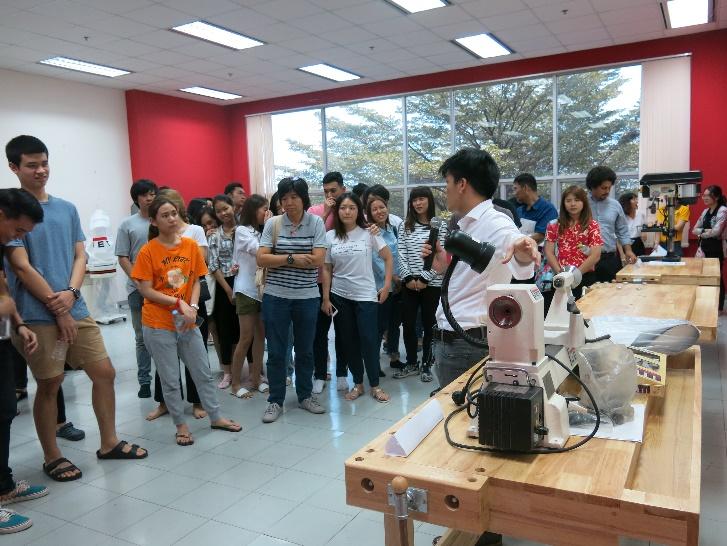
by So Jung Rim | Mar 13, 2018 | News, TU SISU
On March 05, 2018, the School of Global Studies at Thammasat University organised a SISU Workshop in its Makerspace. The workshop was led by guest Digital Fabrication expert, Mr Kitrawee Rudeejaruswan from FabCafe, Bangkok.
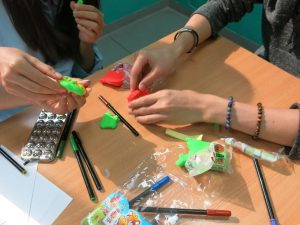
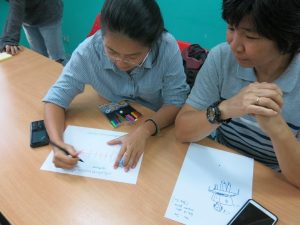
The workshop activity was allocated into two segments and the theme was, ‘Designing with Intent’. Participants were grouped into clusters of three, and for the first half of the workshop were asked to create a character with distinct personality traits and needs. In the second half of the workshop, participants were given the character design from other teams, and were asked to design a chair based on the information. The purpose of this workshop was to guide participants to develop a requirement-based approach to designing.
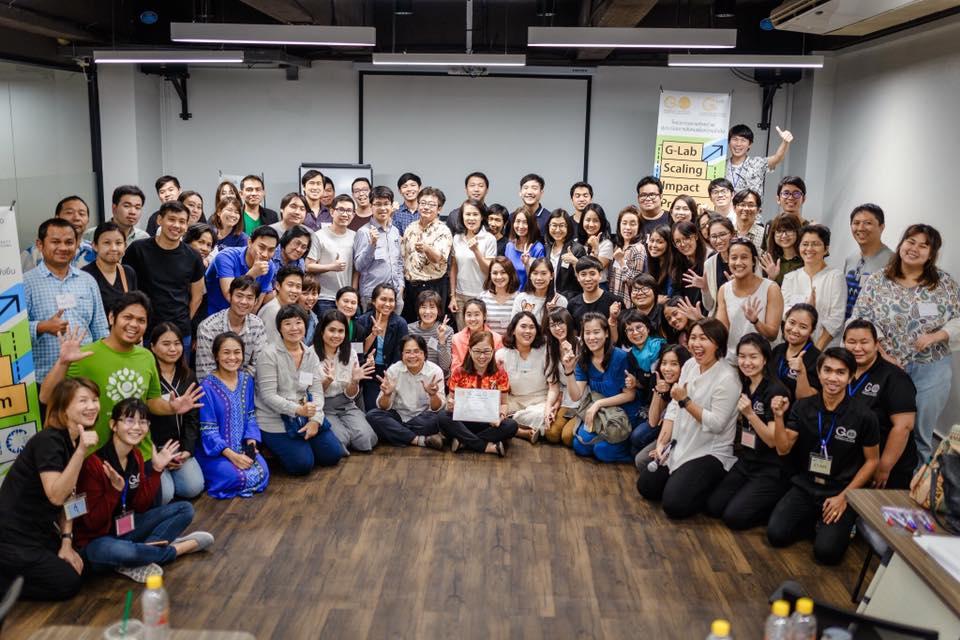
by So Jung Rim | Mar 12, 2018 | News, TU SISU
The program aims to increase the potential of 50 Thai social enterprises in terms of developing their products and services to be able to solve economic, social, and environmental problems and achieve sustainable development goals. 50 social enterprises are offered intensive 3-day workshops including team building/culture, design thinking, business model canvas, SIA/Theory of Change, and product design. After the intensive workshops are completed, the top five social enterprises with most potential will be selected and supported in order to enable them to develop their products to reach full market capacity. The support is in the form of grants, intensive workshops – project management, business strategy, marketing and PR, negotiation and decision making – along with personal coaches. The value of which is up to THB 1,500,000 in total.
The G-Lab Scaling Impact Program has already started to scale up 50 social enterprises starting in March of 2018, and will be completed in August 2018. Moreover, a social enterprise market place will be set up for 50 social enterprises to present their products at the final stage of the program in August. Investors from renowned companies and organizations including press agencies will be invited to participate in the event so that the social enterprisers have a chance to pitch their social enterprise ideas to investors.
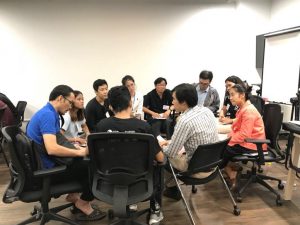
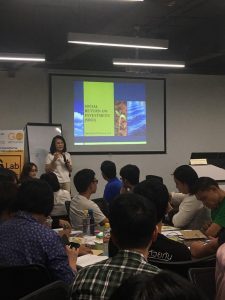
Social Enterprise Team categories include:
- Food
- Health
- Environment
- Education
- Agriculture

by So Jung Rim | Mar 7, 2018 | News
The mission of the Mekong Challenge is to encourage and support young entrepreneurship and venture-led development in the Mekong region in Asia.
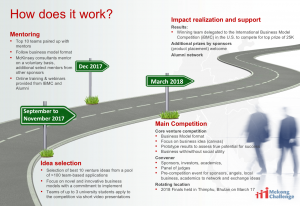
It is the region’s leading annual competition for young entrepreneurs and helps to connect entrepreneurs, international and local businesses, and key academics. Originally established in 2006 in Phnom Penh as the ‘McKinsey Business Plan Challenge’ in partnership with the National University of Management, it became the Mekong Challenge in 2008 and expanded to include Laos, Thailand and Vietnam. The National University of Management is part of the SEASIN project, supporting social innovation in Southeast Asia in partnership with the European Union and the Erasmus+ Capacity Building Programme.
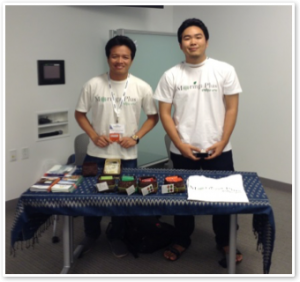
The Lao team pitching and sampling in 2013 at IBMC, Harvard University
The Mekong Challenge has since evolved into a business model competition, that leverages leading-edge thinking on entrepreneurship and business model design tools. Since 2011/12, the Mekong Challenge has covered Cambodia, Laos, Myanmar, Thailand and Vietnam, and Bhutan was added to the list in 2015/16.
Over the past 12 years…
- 1000 applications have been received
- 110 teams have participated
- 12 successful business have been established by Mekong Challenge alumni, these include…
Brown Coffee and Bakery, Cambodia
Brown Coffee and Bakery is committed to providing their customers with the highest quality coffee and pastry products and have fourteen outlets, a delivery service, baking facility and training centre.
360 Advertising and Event Agency, Cambodia
An agency with a focus on ‘growth through collaboration’ that supports business clients by providing sales and advertising support on a number of platforms, including organising multiple annual fairs.
Wheel Go Round, Thailand
An online information hub for wheelchair users that maps accessible attractions, hotels and restaurants around South-East Asia.
Vexere.com, Vietnam
An online transport booking system with zero fees! Vexere.com has become the largest platform for booking bus travel in Vietnam.
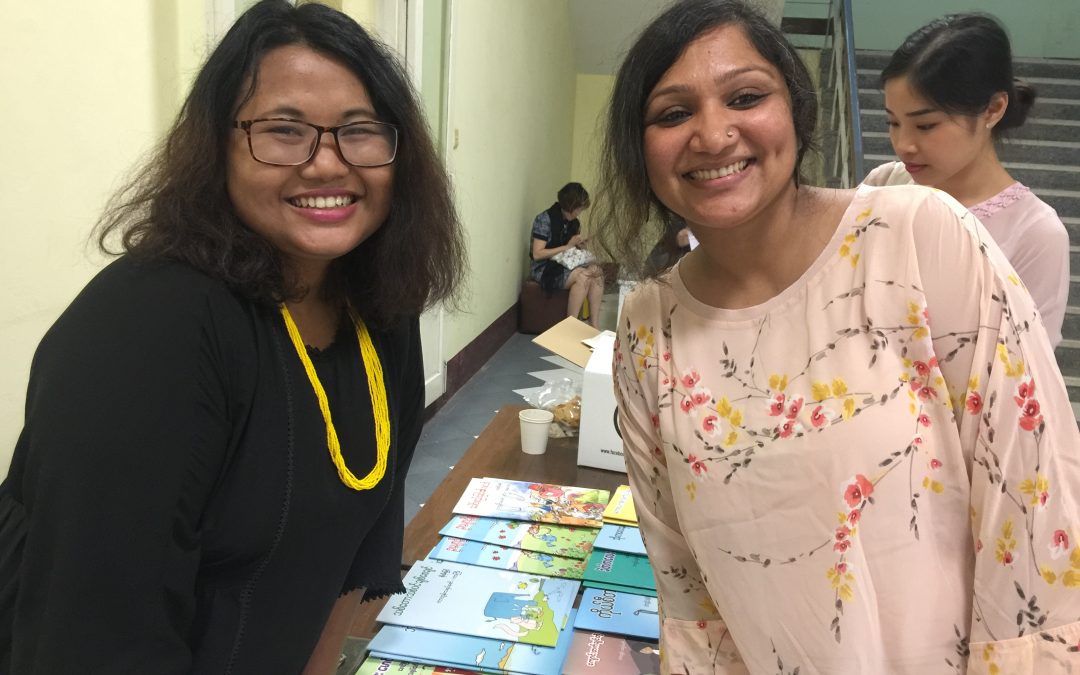
by So Jung Rim | Mar 6, 2018 | News
Written by Sharda Vishwanathan, Scope Group
In November 2017, I had the opportunity to visit Myanmar as part of the consortium and the Southeast Asian Social Innovation Network (SEASIN) working group. SEASIN’s core objective is to effectively support and promote social innovation as a means to achieve sustainable and inclusive socio-economic growth, social cohesion and equity in Southeast Asia, through intercultural, curricular and extracurricular activities. This visit was thus a great opportunity for us to see how best our university partners in Myanmar are facilitating this knowledge exchange through the creation of the Social Innovation Support Units and also interact with the different stakeholders in the social innovation space in the region.
One such interaction that comes to my mind was with the team from the Third Story Project. A collaborative project between the Myanmar Storytellers and the Benevolent Youth Association, creates and produces children’s books in Burmese and other Myanmar languages to distribute free of charge to children around Myanmar. The stories are written and illustrated by Myanmar artists for a Myanmar audience and address different themes, ranging from peace and tolerance to diversity, gender, equality, women empowerment, environment and child rights. It was amazing to see the books that touched upon these important but difficult topics using storytelling.
Storytelling is a great way to engage with communities and create social impact. Be it delivering messages of peace and fostering diversity or breaking stereotypes around gender or simply equipping children with skills around STEM, financial literacy and so on, stories are a great way to engage with children. Being a storyteller and a writer myself, I have seen the impact stories can have on children. I have written stories that break gender stereotypes, promote racial diversity and create awareness around menstruation, child abuse and other social challenges. Using powerful characters, colourful illustrations and simple conversations, stories can encourage children to think, analyse and question things around. Also, it enhances creativity and has the potential to make learning more inclusive and experiential. At an age when they are very impressionable, stories do play a powerful role in shaping children’s perspectives about themselves, others or the world we live in.
To find out more about Sharda’s storytelling project, visit Tale Weavers.
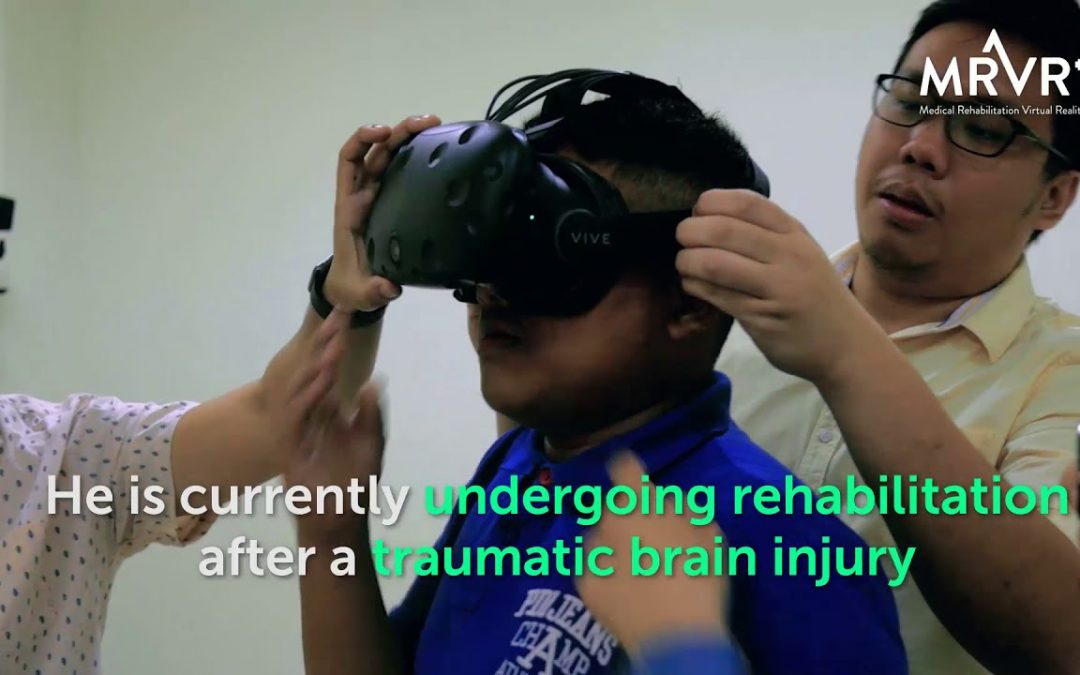
by So Jung Rim | Feb 22, 2018 | News, UiTM SISU
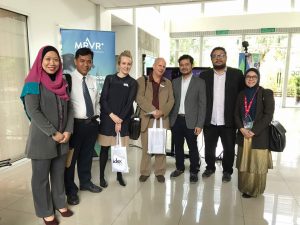 At the UiTM SISU launch, we met with Fariz Hanapiah and Shamsul Nashriq from Motiofixo, Malaysia’s homegrown creative agency. They have recently launched MRVR, and are working with UITM”s Faculty of Medicine to explore how virtual reality can help patients with traumatic brain injury in their rehabilitation programme. MRVR is a platform, which gathers VR content that are of use for rehab from all over the world, and made accessible to rehab facilities and hospitals.
At the UiTM SISU launch, we met with Fariz Hanapiah and Shamsul Nashriq from Motiofixo, Malaysia’s homegrown creative agency. They have recently launched MRVR, and are working with UITM”s Faculty of Medicine to explore how virtual reality can help patients with traumatic brain injury in their rehabilitation programme. MRVR is a platform, which gathers VR content that are of use for rehab from all over the world, and made accessible to rehab facilities and hospitals.
1) Tell us about your idea/project, virtual reality platform for healthcare. What inspired you to do this work?
The idea came about as we were already doing VR content but mainly for little games for brand activations and experimental work. We felt that we needed a bigger goal to just making simple games. Making a full fledge VR game would be the usual path to take looking at the size of the industry but to me there are more untapped areas of making VR content for other uses. We thought of making VR to help people, and rehab seems like the path that we could go into.
2) How are you working with the University (UITM) at the moment? Where do you see the synergy in working with a university?
It will be really important to be working with UiTM’s Faculty of Medicine. It will provide us the clinical backing to how VR will help the patients. It is a perfect match as we seek clinical advisory and them seeking new tech to help facilitate their patients and research.
3) At what stage is your project? What will be your next steps? How do you aim to maximise the impact of your project?
We are at a stage of getting the awareness and completing our pilot content as a proof of concept. As awareness of the usage grows, so do our target customer reach. We will be working closely with UiTM with their established networks of medical organizations and associations to get the awareness through.
4) What are some challenges you face?
Challenges I would say getting the clinical stamp and approval for the contents. And as for the platform will be on getting VR developers to hop on the platform. First few VR content should be able to set the tone of the rest of the content on the platform.On the other hand, as we just about to penetrate a new dimension (healthcare tech), it is important for people (investors, media, innovators) to be aware of such tech. More and more efforts on educating and explaining how our tech works would be essential.
5) What does social innovation look like in Malaysia? What is it’s potential?
Social innovation is pretty much a big deal in Malaysia. Besides globalisation, the government has also contributed by introducing Blue Ocean Strategies that can enhance society & governance efficiency through social innovation. This has created a trend among young Malaysians taking part in volunteerism, entrepreneurship as well as activism programs that require them to mobilise low-cost-high-impact ideas. In the long run, it can position Malaysia as the best social innovation hub of the region.



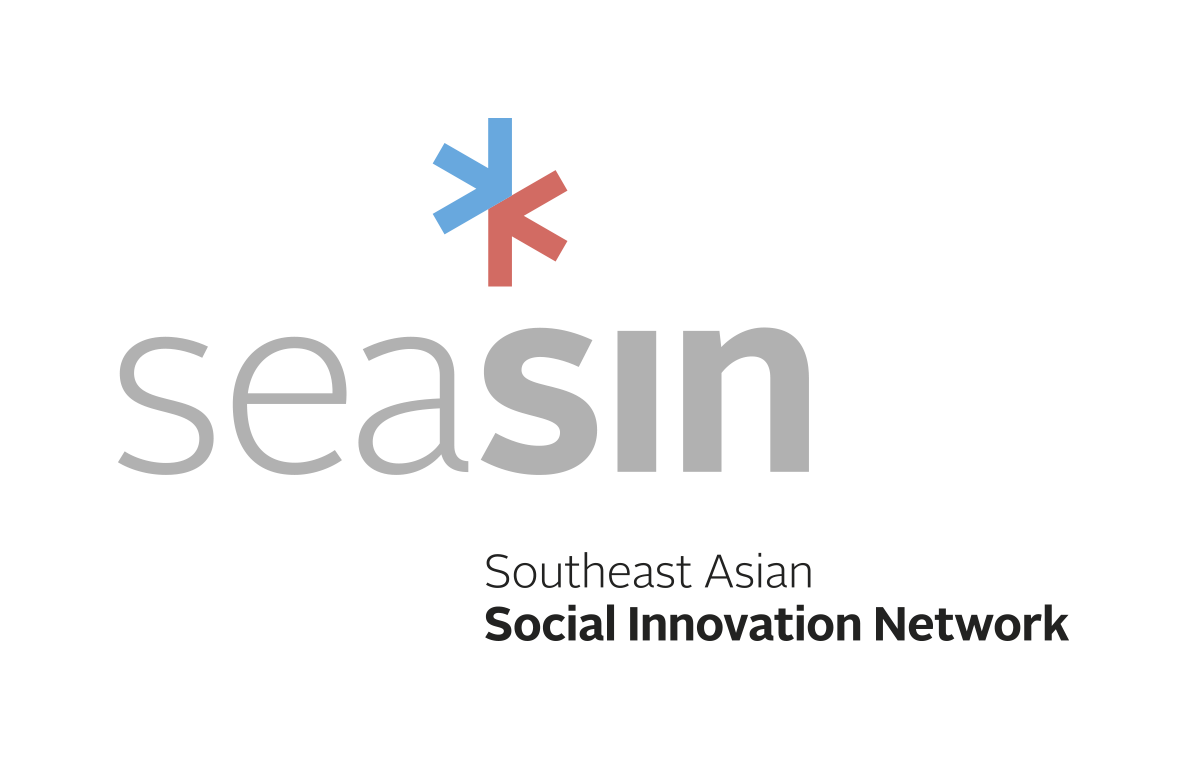








 At the UiTM SISU launch, we met with Fariz Hanapiah and Shamsul Nashriq from
At the UiTM SISU launch, we met with Fariz Hanapiah and Shamsul Nashriq from
Recent Comments